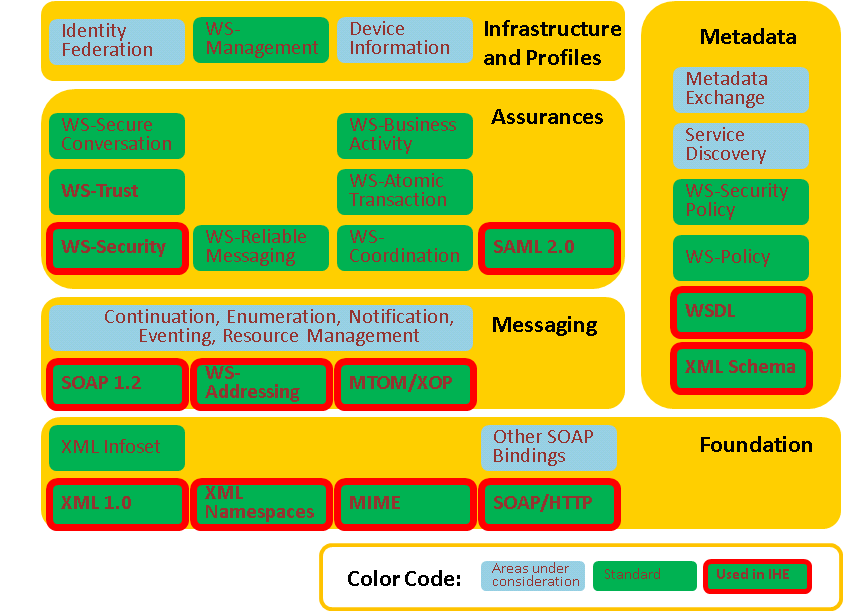IHE ITI Web Services Glossy
Introduction
Web services can be commonly defined as a set of protocols, which are based upon the computer network technology powering the World Wide Web. The goal of implementing web services is to provide a stable, vendor neutral infrastructure platform for data exchange, upon which various products can differentiate themselves by providing value added benefits. This allows better interoperability among systems, which benefits both users, and vendors. From the user's perspective, a vendor-neutral infrastructure allows them to chose the best systems to serve their needs. From the vendor's perspective, using a standards-based and platform-neutral technology lets them concentrate on their core competencies, and lowers the cost of research and development.
The web services standards are developed in two main SDOs: the Organization for the Advancement of Structured Information Standards (OASIS), and the World Wide Web consortium (W3C). These standards are designed to work with each other, and build upon each others' features. The Web Services Interoperability organization (WS-I) further profiles existing standards and provides validation tools to ensure interoperability between implementations. The following illustration provides a view on the various Web Services and the relationship among them:

The Role of Web Services in Health Care Interoperability
Health care interoperability is based upon the meaningful exchange of health care information. The what and how of that exchange is sometimes described as semantic and syntactic interoperability. Standards-based web services provide a SOAP-based messaging infrastructure and transport mechanism, which are an important piece of the syntactic interoperability puzzle.